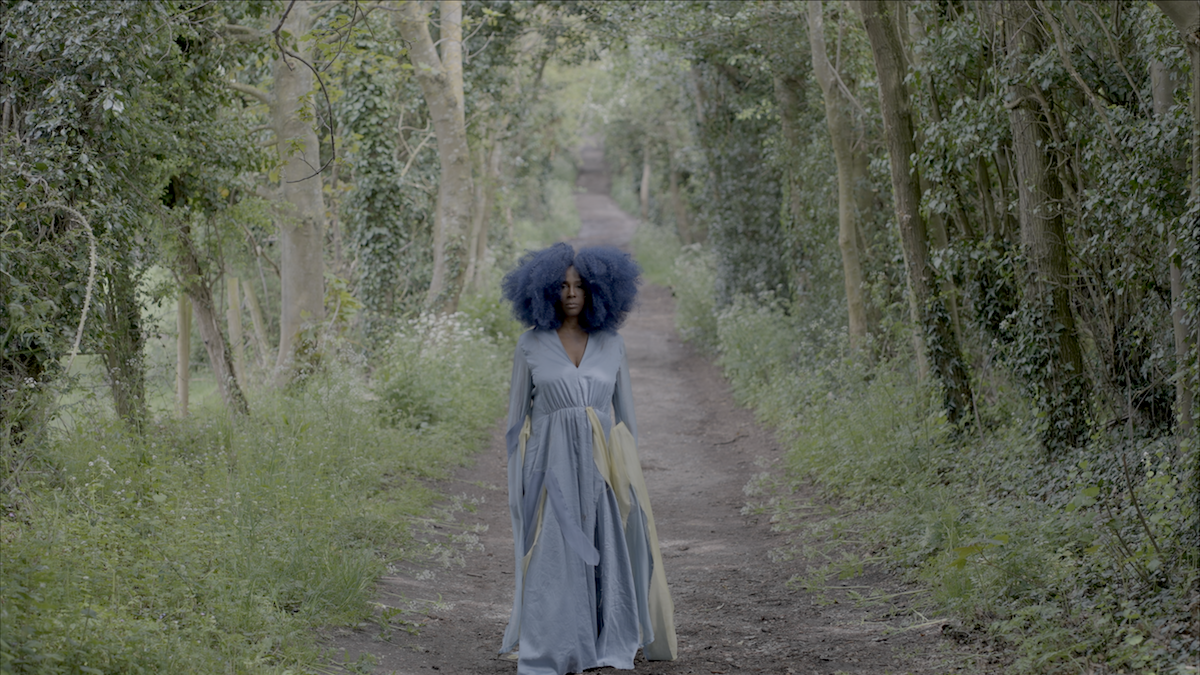The image of Essex is currently being questioned, challenged and re-framed by artists and exhibitions in and from Essex. Michael Landy’s large-scale collage entitled ‘The Essex Way’ on part of Firstsite Galleries’ 140m curved wall begins with a sign that reads, ‘Welcome to England’s Most Misunderstood County.’
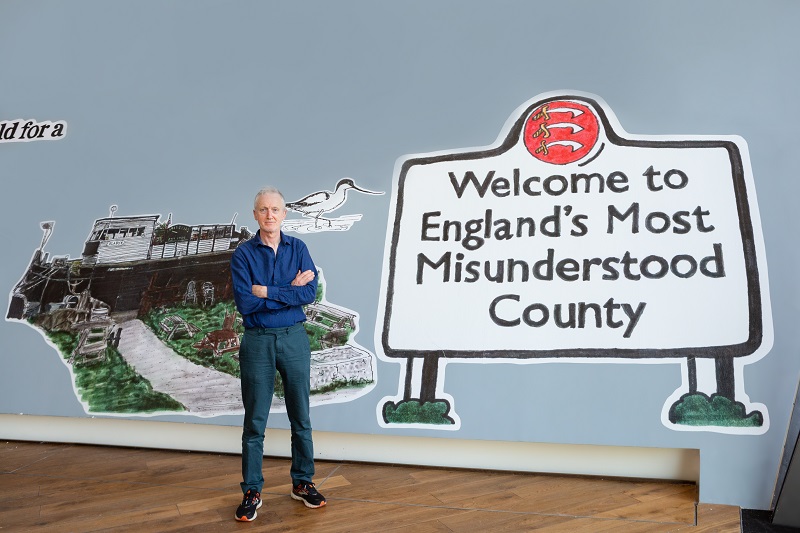
Earlier this year, his exhibition, ‘Michael Landy’s Welcome to Essex’, invited visitors to explore, celebrate and question the recent history of Essex and its contemporary portrayal in popular culture. As part of this exhibition, he created an archive entitled ‘Essexism’ – highlighting the stereotyping of the Essex population into figures such as ‘Essex Man’ and ‘Essex Girls’, as well as the opinions expressed towards the county through media representation. This enables exploration of a wide range of material including clips from TV shows and films, such as ‘The Only Way is Essex’, ‘Birds of a Feather, ‘Spitting Image’, ‘Essex Wives’ and Harry Enfield’s character ‘Loadsamoney’, as well as books, magazine articles, music and online news items.
His larger-than-life standing figure – ‘Essex Man (after Collet)’ (2021) – currently in the Welcome Area at Firstsite is made from a hand-drawn reproduction of the original ‘Essex Man’ illustration by Edward Collet in a 1990s Sunday Telegraph and was created for ‘Michael Landy’s Welcome to Essex’. As was ‘The Essex Way,’ an ongoing artwork which began as part of the exhibition and is documenting favourite walks in Essex undertaken by Landy with a number of Essex residents, thinkers, artists, writers, politicians and celebrity TV stars.
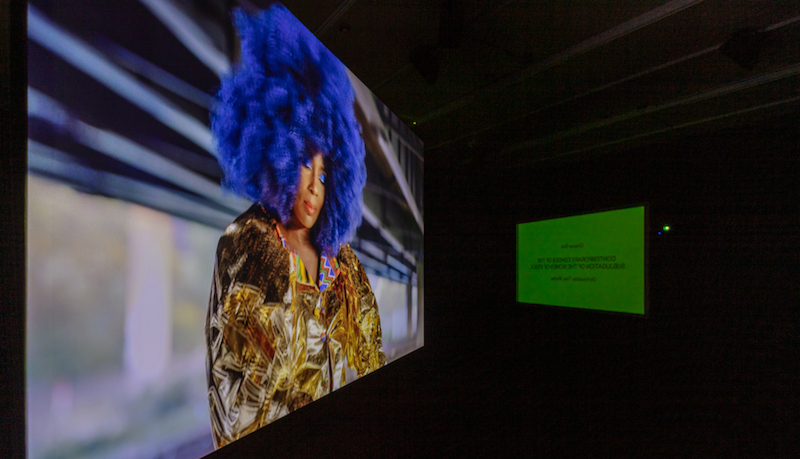
One of those who has accompanied Landy on an Essex walk is Elsa James, whose recent works investigate recovery, recollection, and the archives, to examine ideas surrounding regionality of race and black subjectivity. Her earlier films, such as ‘Forgotten Black Essex’ (2018) and ‘Black Girl Essex’ (2019), forged new understandings of blackness viewed through a contemporary Essex lens by exploring little-known histories and current accounts of residents in England’s most misunderstood county. These, and other related films by Michael McMillan and George Morgan, feature in the associate programme to James’ latest exhibition ‘Othered in a region that has been historically Othered.’
This exhibition at Focal Point Gallery in James’ home city of Southend-on-Sea, includes a major three-part film installation and original sound works, alongside text and new series of prints. The exhibition, including the earlier films, acknowledges the untold histories of Essex and seeks to encourage audiences to reconsider perceptions and widespread narratives about the county, by reflecting upon their own subjectivity and performed identity.
‘Othered in a region that has been historically Othered’ is a major new film that comes in three chapters moving from initial experiences of being othered, through the Grenadian island ritual of Jab Jab which provides a transformative moment, into a final chapter that imagines a new future for Essex by taking the othering and turning it ‘into a zone of possibility and new dreaming.’ Unlike her earlier films in which the actual stories of othered Essex residents were re-told, these films feature James herself channelling through her performance – she equates this, in an interview with Ekow Eshun, to Christians receiving the Holy Spirit – the experience of being othered and of re-imagining.
Her performances in these films are based both on historical research into the persecution of women as witches in Essex in the mid-17th century by the infamous Witchfinder General, Matthew Hopkins, and focus groups held in Essex with asylum-seekers and refugees, black students, and the LGBTQIA+ community. From the focus groups have come phrases and concepts which have been incorporated into the lyrics and poetry that feature in the films. In this mix of words, sounds and images, James looks within ‘to find the source / of that redemptive’ and asks ‘What would Essex look like if the norm got turned on its head and the ‘Othered’ became the norm?’
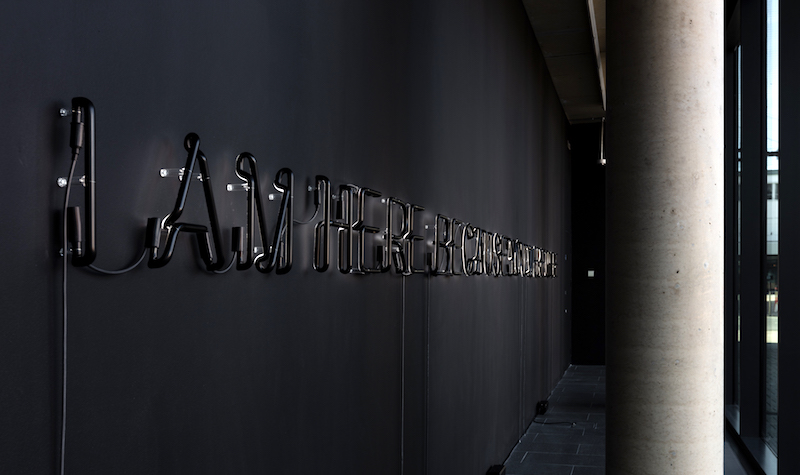
Alongside the film, is a new sound work, ‘The Journey’ (2022), evoking the experience of enslaved African people forced to walk through the long passage and pass through ‘the door of no return’ to board the ships that would take them across the Atlantic on the treacherous journey known as the Middle Passage. This work leads to ‘The Black Interior,’ a set of screen-prints documenting lived experiences of racism, specifically the black male experience, with their own accompanying sound piece. Part of the ‘The Blackness Series’ – text-based works rendered in black font on black in a darkened room which challenge the viewer by being intentionally arduous to read – these serve as a reminder of who is visible and invisible in society. A new large-scale black neon work, I AM HERE BECAUSE YOU WERE THERE, quotes words spoken in 2018 by David Lammy MP addressing the House of Commons about the Windrush Scandal, while ‘The Black Essex Flag’ (2019) replicates the official county flag, dating back to the 17th century, in black on black.
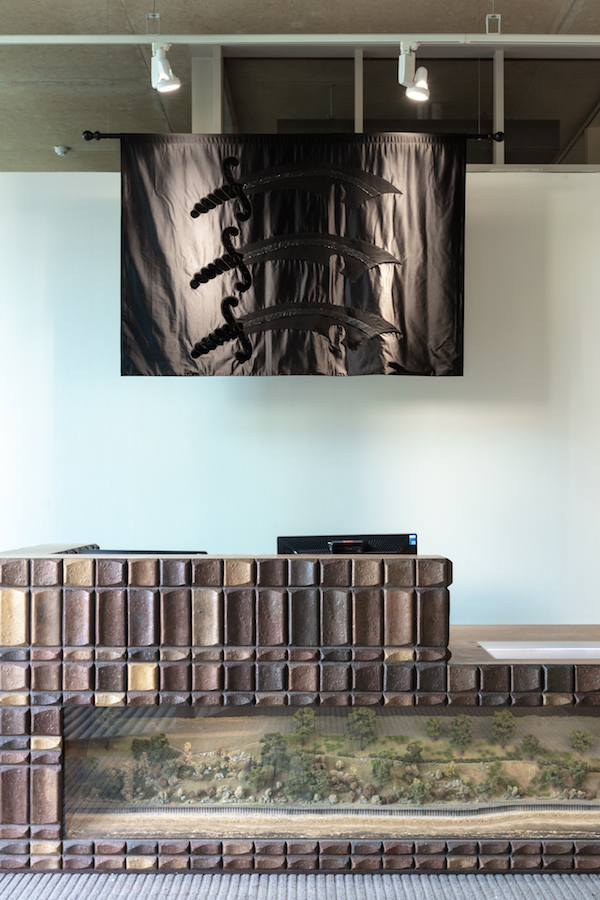
‘The Black Essex Flag’, 2019 By Elsa James. Installation View. Photo Credit: Anna Lukala
This new body of work demarcates black space within the collective mindset and narratives held about Essex and its people encouraging the potential for the recognition and support of other black residents and creating a set of principles or resources for this demarcation.
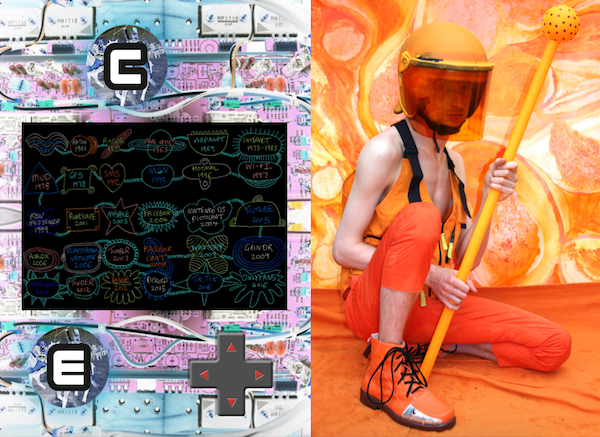
Also to be found in Southend at this time are two new site-specific works for the annual railway bridge commission on the High Street by another emerging Essex-based artist George Morl, who has worked with Elm Class of Nancealverne School in Penzance. These commissions reflect on 100 years of radio broadcasting in the county and Southend becoming a ‘Gigabit City.’
‘ESSEX @WAY from keyboard?’ is a digital collage that illustrates the importance of communication devices and online communities for disabled and neurodivergent people. Taken from the term ‘away from keyboard (AFK)’, which refers to a computer user who has temporarily left an interaction with the virtual world, the commission highlights the contemporary alternative pilgrimage of uploading oneself online as a disabled and queer person to connect through networks that have evolved from Essex. From the discovery and development of electricity, radio and radar, and fibre optic cables, these technologies have facilitated several key milestones that have created alternative possibilities for communication and connection, particularly for communities facing societal barriers. Through the parallels of technological innovation such as Marconi’s experiments and the first wireless radio transmissions in Essex and Cornwall where the students live, this project reflects on the possibilities and complexities of networks.
The artwork is configured in the style of a keyboard adapted for those with learning disabilities and for computer gaming. It is made up of several images, including computer graphics, artworks by students, and a series of portraits of the artist as a digital avatar directed by the students reflecting on comic and sci-fi characters. Referencing visual motifs in the postcard works of artist Madge Gill (1882-1961), gaming culture and diversification of communication technologies, the commission considers how virtual worlds can be viewed as an alternative form of migration. This is in stark contrast to the artists’ research into the forcible movement of disabled people in the early 1900s in South Essex, with individuals now utilising online spaces for autonomy against the colonial legacies of networks.
The commission coincides with the daily screening of new video work, ‘Profiles from Essex’, on Big Screen Southend. This emerges from research gathered by Morl as part of ‘New Histories’, a pilot project with East Contemporary Visual Art Network (ECVAN) and funded by Arts Council England to explore new regional histories from diverse communities across the East of England. Workshop images from this artwork were made as part of a project with students from Elm Class, Nancealverne School since 2021 through the Jerwood Newlyn Residency with Newlyn Art Gallery & The Exchange in Cornwall. Following the public display in Southend, the artwork will tour down to Nancealverne School, Penzance in October 2022.
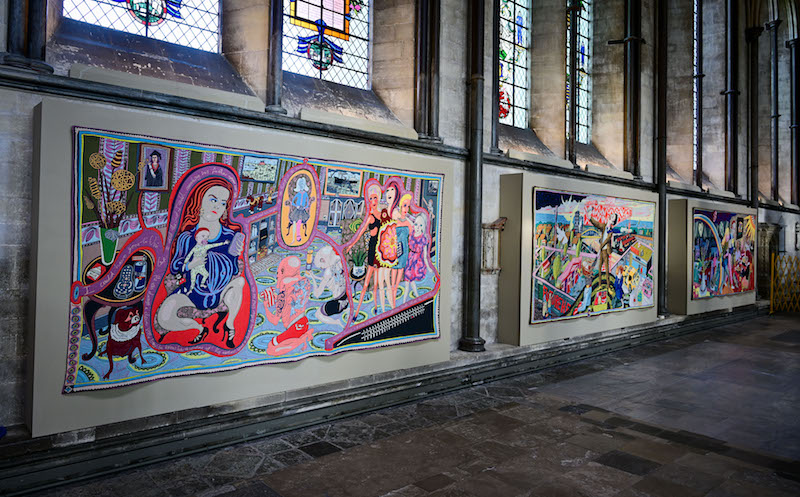
Picture by Finnbarr Webster
Some of the issues and tensions raised by these exhibitions and installations also surfaced in earlier works by another Essex artist, Grayson Perry. The Chelmsford-born artist has created work – such as ‘A House for Essex’ (2015), which serves as a secular chapel to the memory of a fictional Essex woman, Julie Cope – specifically for Essex that explores aspects of Essex identity. His tapestry series, ‘The Vanity of Small Differences’ (2012), currently on show at Salisbury Cathedral, is a series of six tapestries that Perry created while filming the Channel 4 documentary ‘All in the Best Possible Taste.’ In this series, Perry went on ‘safari amongst the taste tribes of Britain’ to gather inspiration for the tapestries and wove the characters he met into a narrative charting the ‘class journey’ made by his fictional character Tim Rakewell.
A Freudian term, ‘the vanity of small differences’ means we dislike no one quite so much as our nearest neighbour, so, although the characters, incidents and objects Perry encountered were on journeys through Sunderland, Tunbridge Wells and The Cotswolds, the themes explored can also be viewed as relating to his county of birth and as having autobiographical resonances. In this narrative and these tapestries, Perry explores the idea of ‘the vanity of small differences in relation to consumer culture, where we buy what we buy to express our sense of uniqueness, yet find we are constrained by norms that derive from our social class. The end of the narrative is a car crash reminding us of the impermanence of life whatever our class or wealth; a reality that reinforces our similarity, one to the other, despite our efforts to differentiate ourselves.
Words: Revd Jonathan Evens Top Photo: Othered in a region that has been historically Othered’ By Elsa James, Chapter One ‘Contemporary Echoes of the Subjugation of the Women of Essex’. Film still by Andy Delaney
‘Michael Landy: The Essex Way,’ Firstsite, 16 September 2021 – 31 December 2022
Elsa James ‘Othered in a region that has been historically Othered,’ Focal Point Gallery, 26 June to 18 September 2022
Railway Bridge Commission: ‘ESSEX @WAY from keyboard?’, Southend High Street, 16 July to 23 October 2022
Grayson Perry’s ‘The Vanity of Small Differences,’ Salisbury Cathedral
George Morl with Elm Class, Nancealverne School, Penzance. ‘Essex @WAY from keyboard?’, 2022.

